All products featured are independently chosen by us. However, SoundGuys may receive a commission on orders placed through its retail links. See our ethics statement.
Sony WF-1000XM4 vs Bose Quietcomfort Earbuds
August 22, 2024
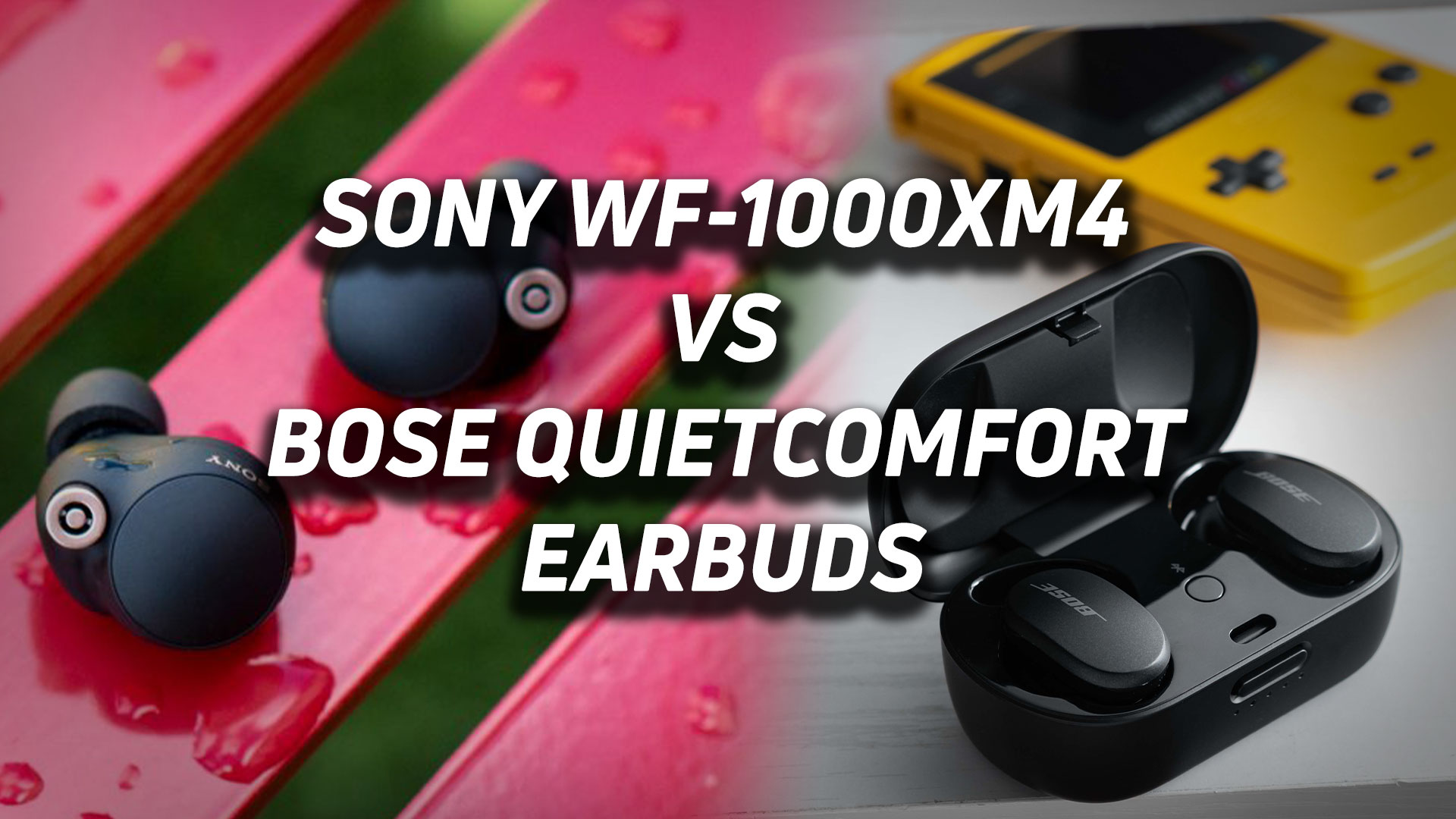
With the release of the WF-1000XM4 earbuds, Sony brought forward a new competitor for the true wireless headphone crown. The earbuds aim to take down the best from Bose, which has made a significant dent in the market with the Bose QuietComfort Earbuds. Both cost a pretty penny, so we’re comparing them to see which is worth your money.
While both these earbuds are still good buys on sale in 2024, they have been succeeded by the Sony WF-1000XM5 and the Bose QuietComfort Ultra earbuds. If you are looking for the latest and greatest, you can read how they compare in our versus article.
Is the Bose QuietComfort Earbuds more comfortable than the Sony WF-1000XM4?
The previous generation product was pretty bulky, but with the new WF-1000XM4, Sony has managed to pack the same great features into a much smaller package. The case is upgraded, too, and it can now charge wirelessly via Qi-compatible pads.
The Sony WF-1000XM4 also comes with three sizes of polyurethane foam ear tips that mold to the shape of your ear. The Sony Headphones Connect app even has an ear tip fit test to ensure you get an ideal fit.
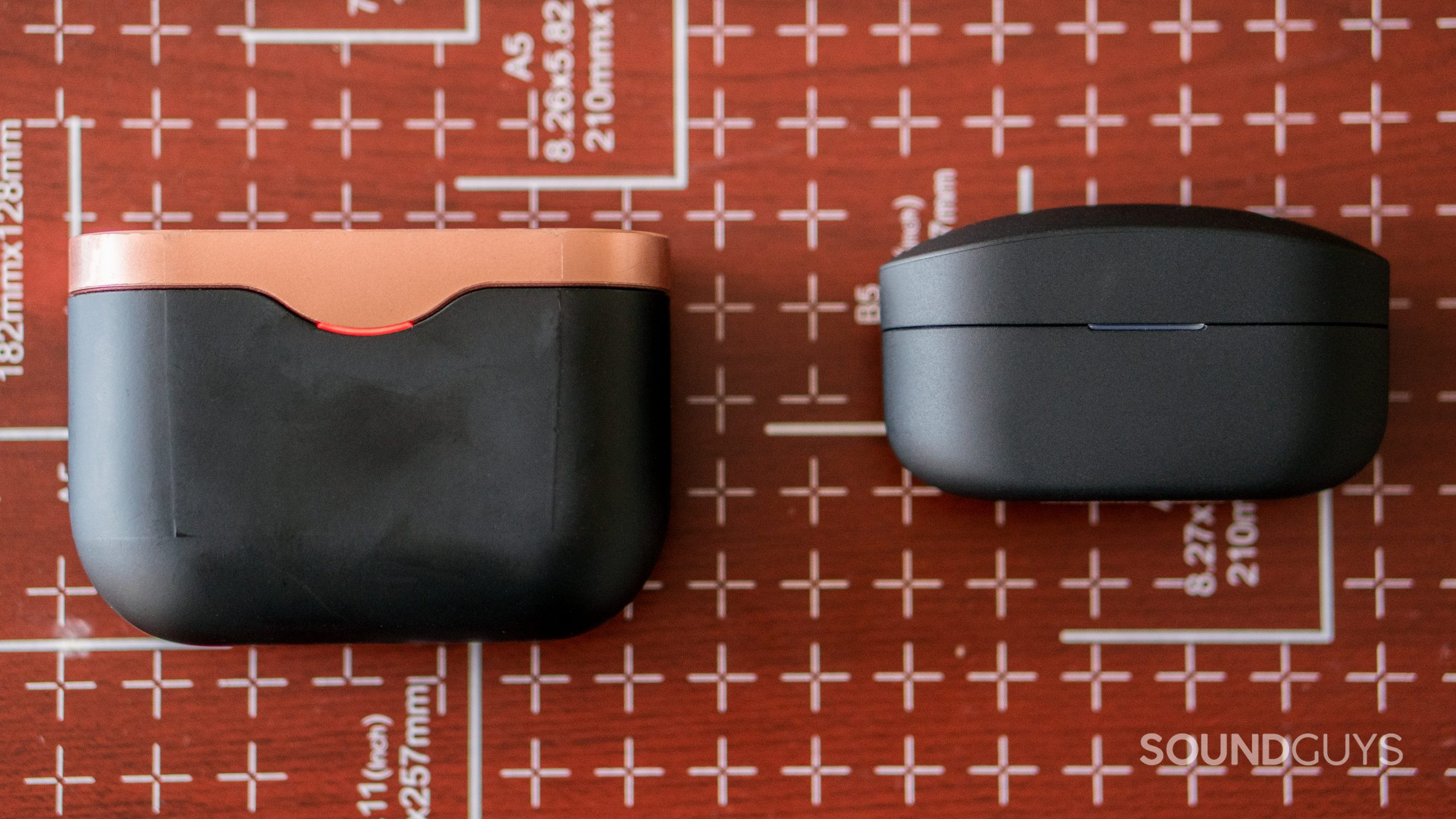
While Bose has trimmed down the QuietComfort since its first attempt at true wireless earbuds, these earphones still protrude more from the ear than the Sony WF-1000XM4. A chunky charging case accommodates the earphones and shares the same matte black or white exterior as the earbuds.
The StayHear Max Tips that Bose includes with the QuietComfort Earbuds are made of silicone, with small wings to ensure a snug fit. While they don’t provide as tight a seal as foam tips, most people won’t have any major fit problems with them, especially once selecting the right size from the three included options.

Both sets of earbuds have an IPX4 rating for sweat and water resistance, so you can wear either buds to the gym or out in a bit of rain. Just be sure to let the earbuds dry off completely before returning them to the case.
Is it easier to control the Sony WF-1000XM4 or the Bose QC Earbuds?
Both sets of earbuds include onboard capacitive touch controls for controlling music playback and calls. The controls for each can be customized in their respective mobile apps. Both work well, but we found the Sony touch controls a little more intuitive and customizable than the Bose touch controls.
Below is a table depicting the default Bose QC Earbuds controls.
| Action | Left side | Right side |
|---|---|---|
| Action Two taps | Left side Cycle through favorites (ANC modes) | Right side Pause/play music |
| Action | Left side | Right side Pickup/end phone call |
| Action Hold | Left side Skip song | Right side Access smart assistant |
| Action | Left side Check battery level | Right side Reject incoming calls |
| Action Remove/insert | Left side Pause/play music | Right side Pause/play music |
| Action | Left side Auto Transparency mode (remove) | Right side Auto Transparency mode (remove) |
| Action Swipe | Left side | Right side Volume up/down |
Below is a table depicting the default Sony WF-1000XM4 controls.
| INPUT | ACTION (left bud) | ACTION (right bud) |
|---|---|---|
| INPUT ONE TAP | ACTION (left bud) Mute/ANC/Ambient sound | ACTION (right bud) Play/Pause |
| INPUT TWO TAPS | ACTION (left bud) N/A | ACTION (right bud) Track forward/answer call |
| INPUT THREE TAPS | ACTION (left bud) N/A | ACTION (right bud) Track backward |
| INPUT TAP AND HOLD | ACTION (left bud) N/A | ACTION (right bud) Smart assistant |
Does Bose or Sony have a better headphone app?
A proper companion app is an essential part of any Bluetooth headphone. Not only do companion apps download firmware updates so your earbuds stay up to date, they also allow you to build a custom listening experience.
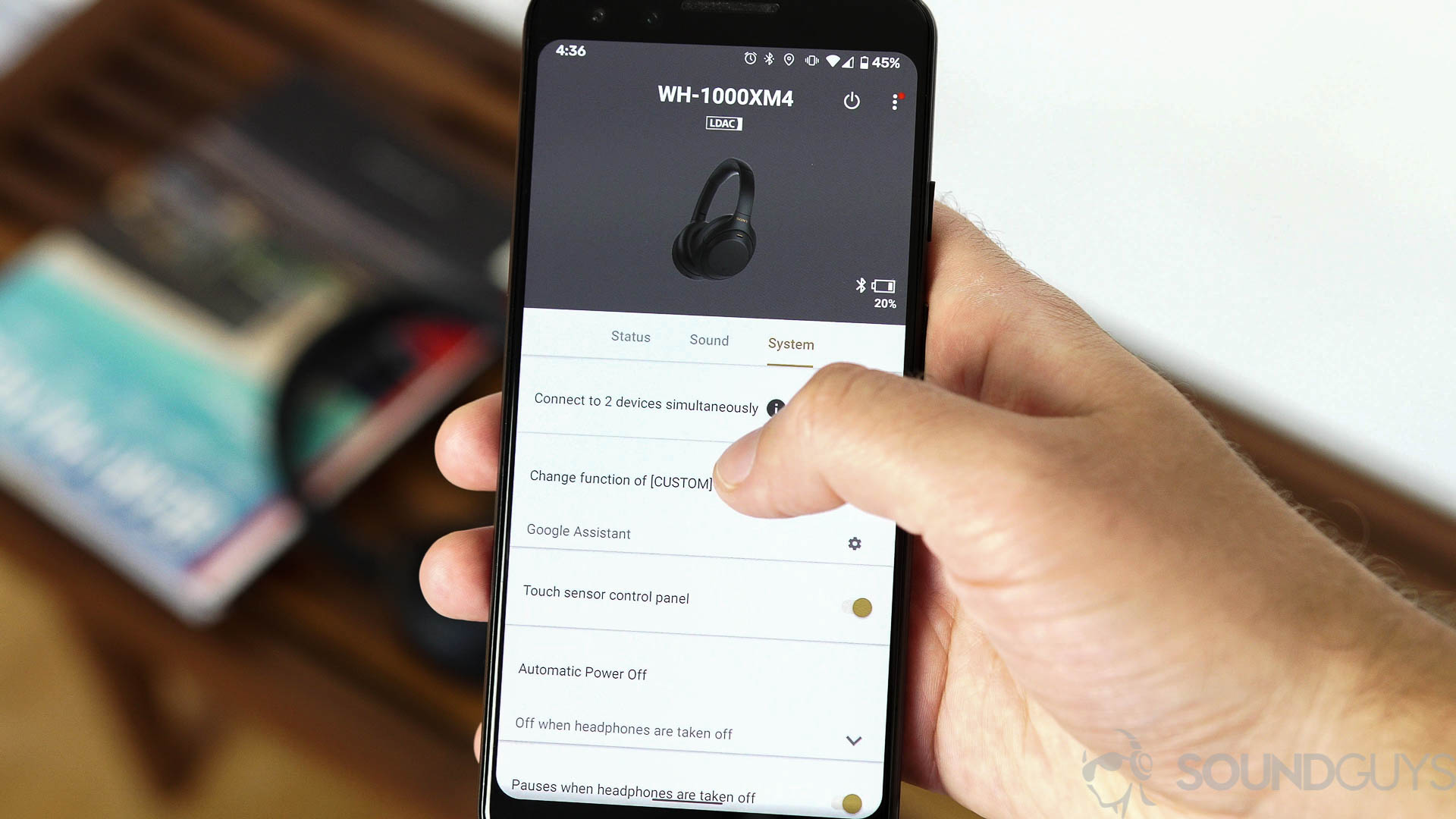
Sony offers deep in-app integration with the Sony WF-1000XM4 via Sony Headphones Connect. Inside the app, you have access to features that let you customize your listening experience, including EQ controls and Sony 360 Reality Audio setup for in-ear spatial audio.
The Sony app also lets you customize usability features like voice assistant access, speak-to-chat, touch sensor control mapping, and ambient sound controls. You can even make the headphones automatically switch between noise cancelation levels based on your location or activity—whether you’re sitting, walking, or commuting to work.
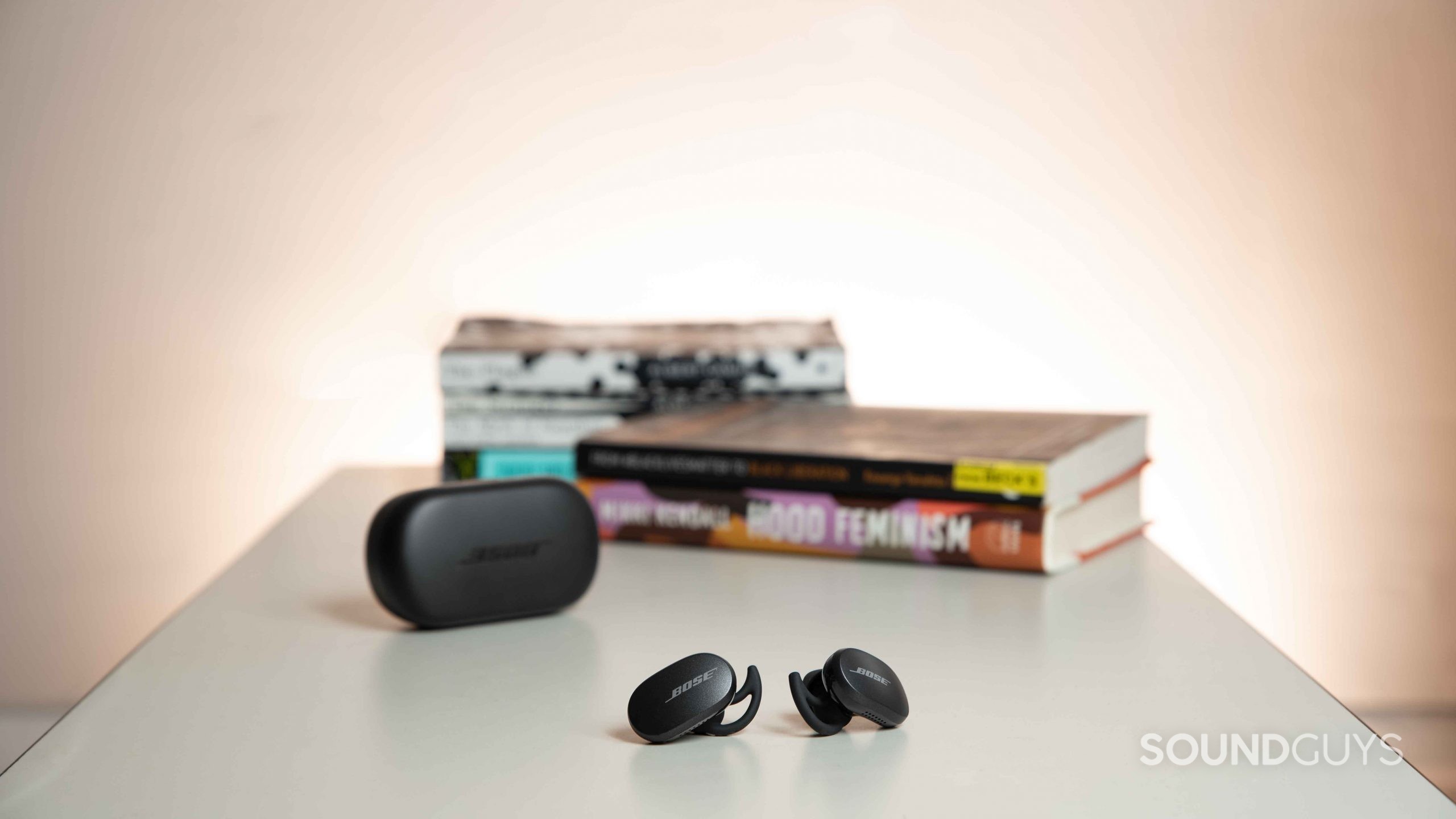
Software control over the Bose QuietComfort Earbuds is done through the Bose Music app. Inside the app, you can access noise cancelation adjustments, voice assistant access, and device management options for multipoint connectivity.
How do the QuietComfort Earbuds and Sony WF-1000XM4 connect?
The QuietComfort Earbuds use Bluetooth 5.1 and operate well within a nine-meter range. Unfortunately, the earbuds only support the SBC and ACC Bluetooth codecs. While AAC performs great on Apple devices, it’s inconsistent on Android devices. If streaming quality issues become too frustrating, you can always force SBC from your Android phone’s developer settings.
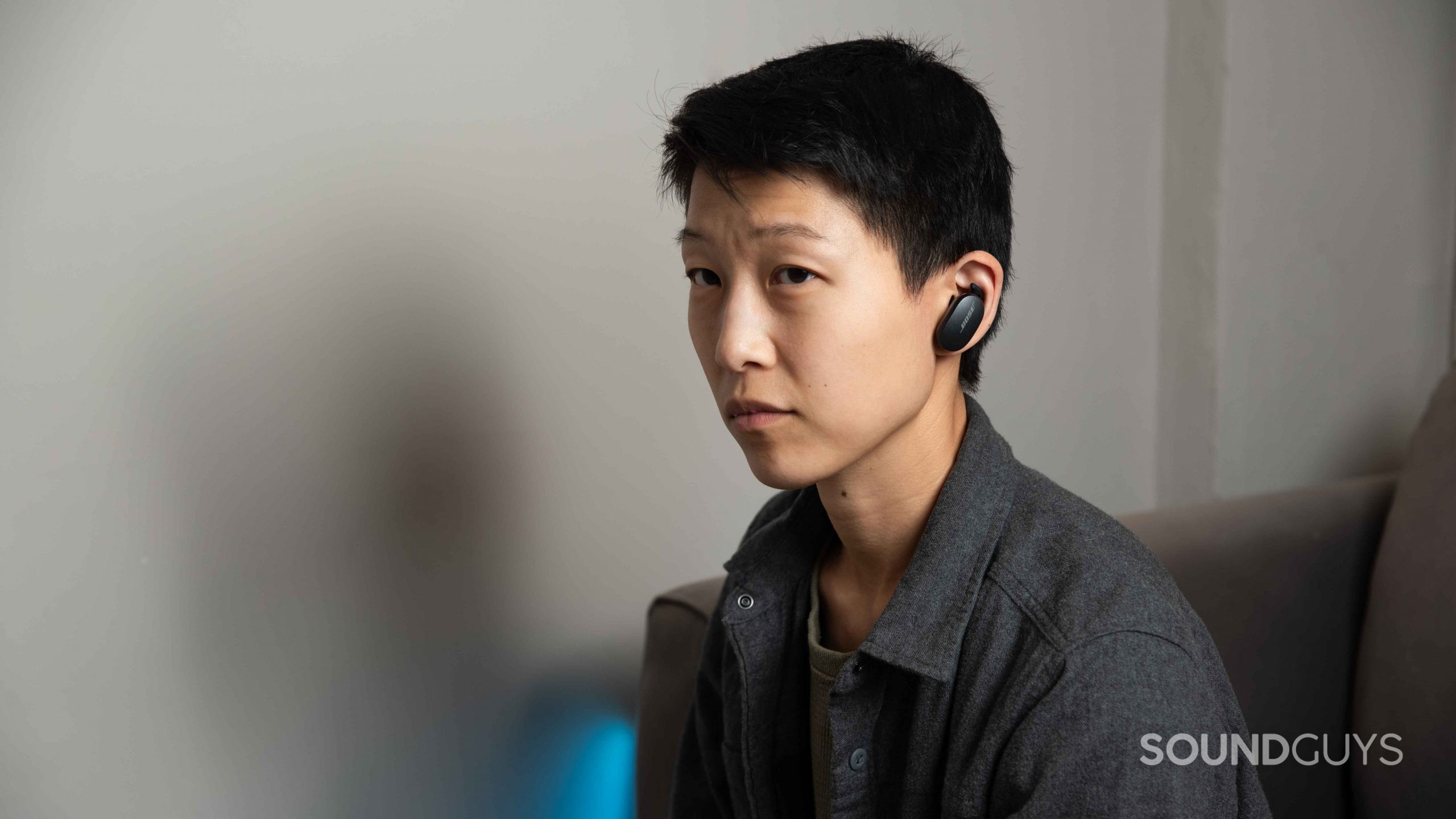
On the other hand, the Sony WF-1000XM4 earbuds connect to your phone via Bluetooth 5.2. If you have a smartphone with a processor that supports this version of Bluetooth, you should see improved battery life and stronger connections. Alongside SBC and AAC, the Sony earbuds support LDAC, which is capable of high bit-rate audio transmission on Android devices. Bluetooth 5.2 firmware also opens the door for possible LE Audio support down the line.
Does the Bose QC Earbuds have better battery life than the Sony WF-1000XM4?
According to our tests, the Sony WF-1000XM4 lasted longer during normal use, lasting roughly 7 hours and 43 minutes. On the other hand, the Bose QuietComfort Earbuds lasted 5 hours and 29 minutes—roughly two hours less. Our testing is done with active noise canceling turned to the highest setting, so you may get more mileage by limiting noise canceling intensity or turning it off entirely.
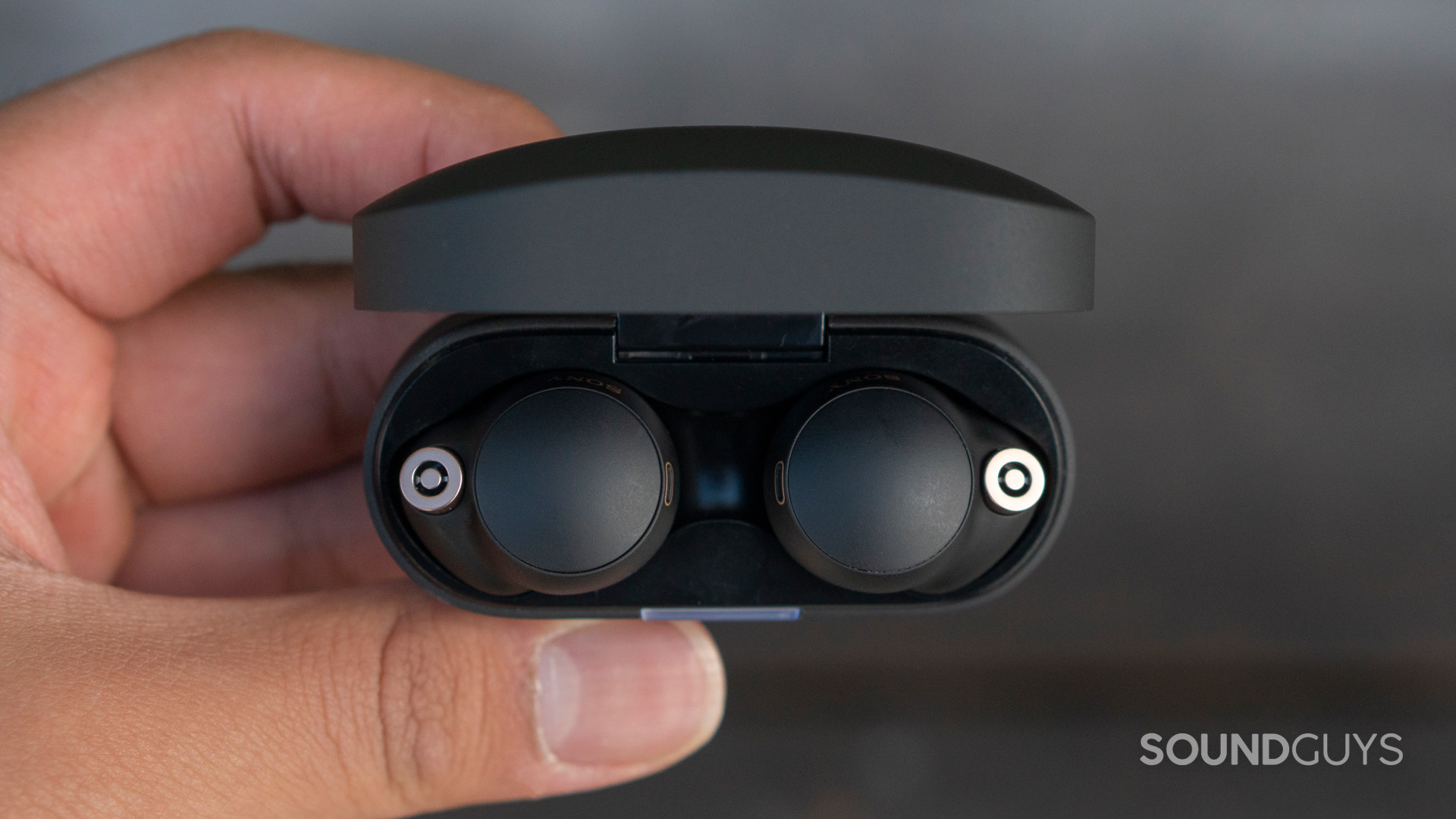
Additionally, the Sony earbuds recharge in only an hour and 30 minutes, whereas the Bose earbuds take a full two hours. Both earbud cases can be charged wirelessly or via USB-C, and both fast-charge the earbuds. With Bose, just 15 minutes in the case yields 120 minutes of playtime; Sony’s earbuds require just 5 minutes in the case for 60 minutes of playtime, slightly faster than Bose’s charging speeds.
Does the Bose QuietComfort Earbuds have better noise canceling than the Sony WF-1000XM4?
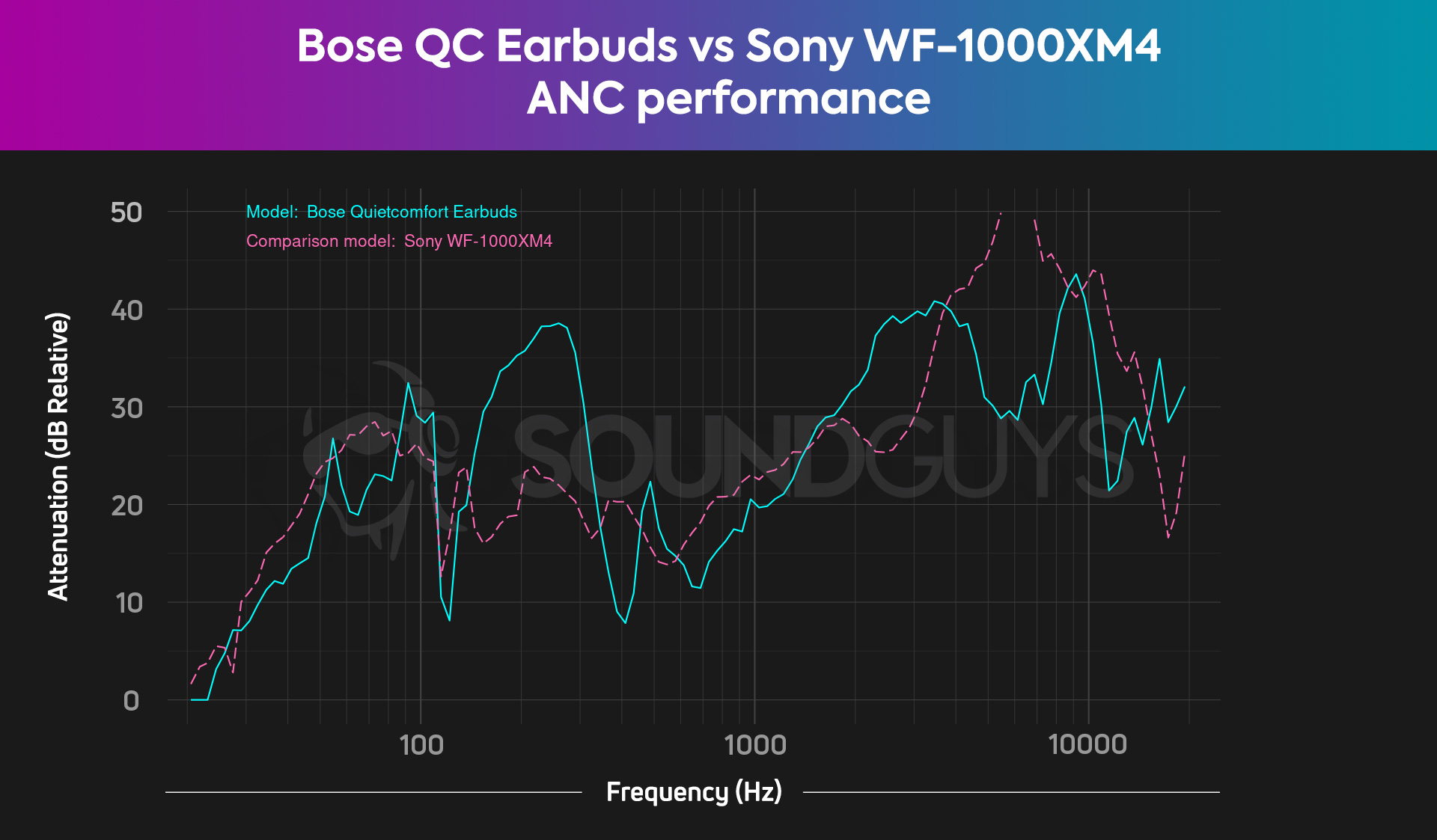
The Sony WF-1000XM4 is better at blocking out ambient noise than pretty much any other in-ears we’ve tested so far. The memory foam ear tips provide an incredible seal for passive isolation, effectively blocking out or reducing incidental noise like coworkers chattering and the gabble of a subway platform or city street. It does this better than the Bose QC Earbuds. When you turn the ANC on, droning sounds from 50Hz and higher will sound roughly one-quarter to one-sixteenth as loud.
For drowning out ambient sounds, the Bose QuietComfort Earbuds also get the job done very well. Bose’s earbuds do more to affect low-frequency sounds, though with less consistency than Sony’s. The silicone tips don’t block out as much incidental noise, although they do allow for better hearing in transparency modes.
You can’t go wrong with either headset, and it depends on what kind of noise you want to block out more. Both sets of earbuds allow you to set the amount of ANC within the software or with the touch controls.
Do the Sony WF-1000XM4 or Bose QuietComfort Earbuds sound better?
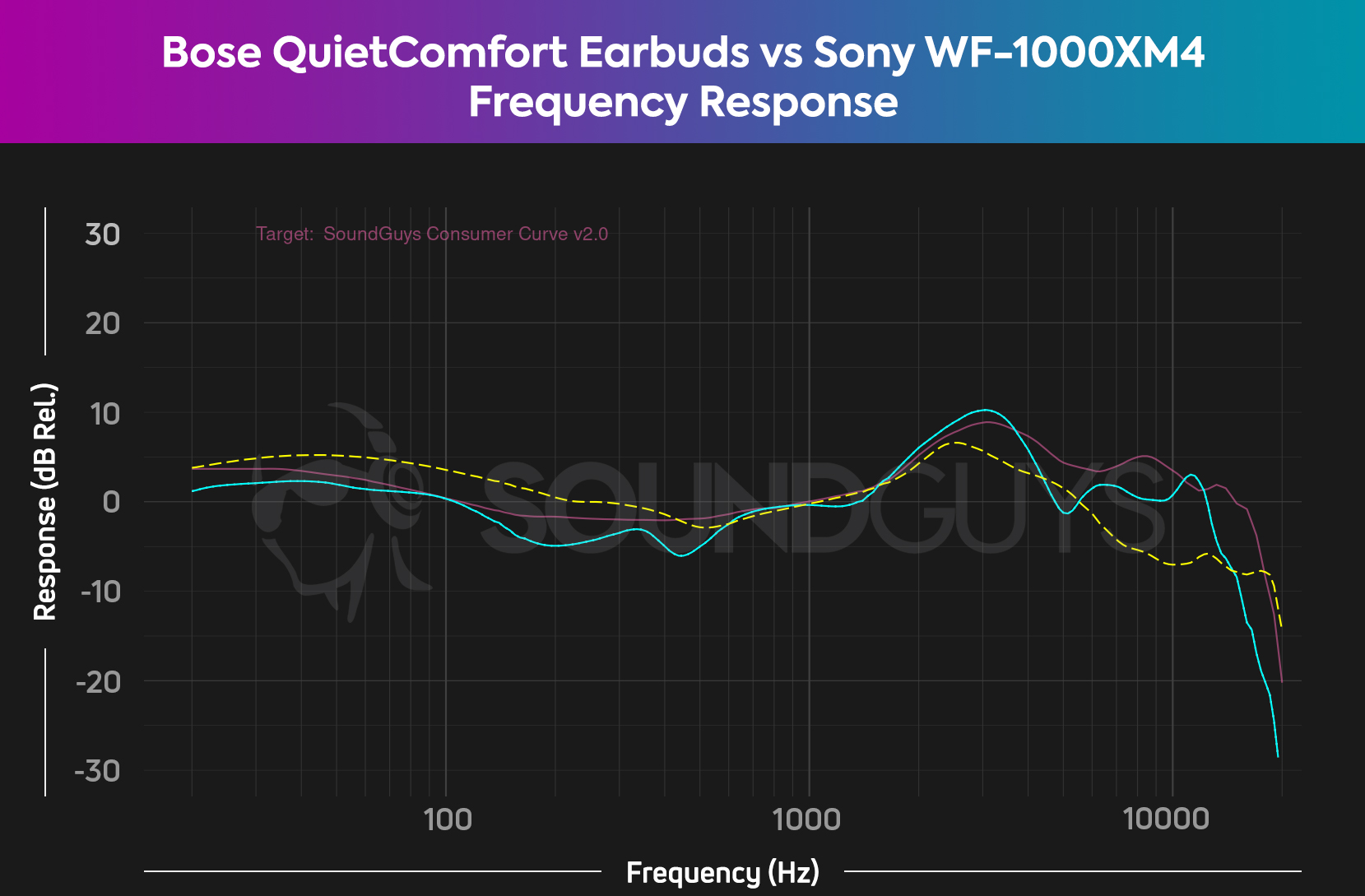
While the frequency response of these earbuds is unlikely to be some kind of audiophile endgame, each offers a consumer-friendly sound most people will enjoy. Sub-bass notes on the Bose QuietComfort Earbuds sound almost two times louder than low-midrange sounds, and treble notes sound even louder relative to mids. Most people will enjoy this boost as it adds a bit more oomph to music while retaining instrumental detail.
Like the Bose earbuds, the Sony WF-1000XM4 offers a strong boost in the low-frequencies where bass notes live. However, unlike the Bose earbuds, the Sony earbuds attenuate high-frequency sounds. This under-emphasis may result in a loss of clarity on some material.
If you’re not a fan of the sound offered by the earbuds, either app lets you create a custom EQ profile. Bose also offers its Active EQ technology, which automatically adjusts the lows and treble response for a consistent volume output across media.
Is the Sony or Bose microphone better for you?
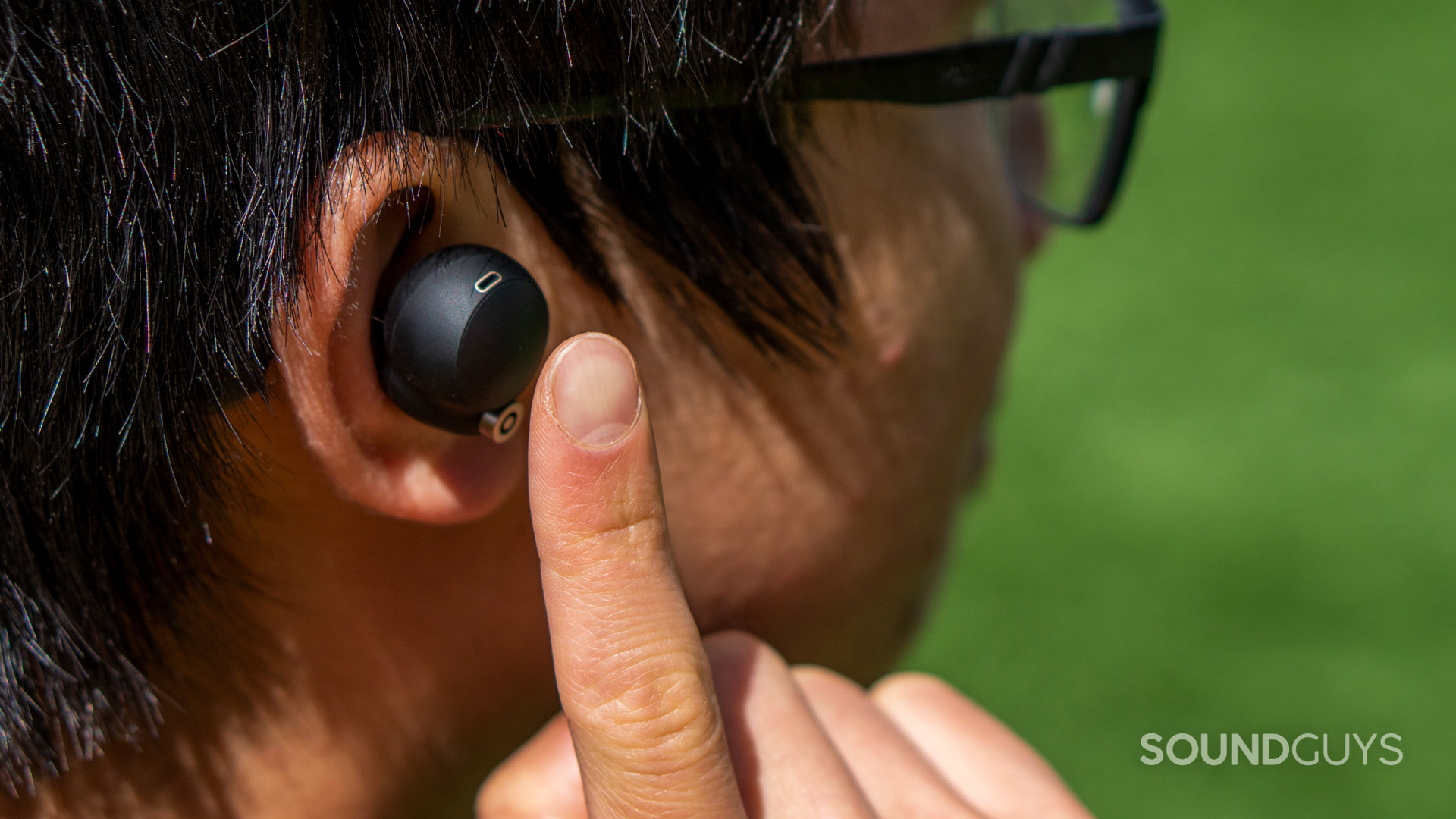
The microphones on both sets of earbuds are more than adequate for taking calls on the go. The Sony WF-1000XM4 detects when you speak to help determine what sounds you want it to boost and what’s just noise. The Bose QuietComfort Earbuds do a very good job of actively canceling predictable background noise. In ideal conditions, speech intelligibility is never an issue, but there is a noticeable difference in quality between these two products:
Sony WF-1000XM4 microphone demo (Ideal conditions):
Bose QuietComfort Earbuds demo (Ideal conditions):
Sony WF-1000XM4 microphone demo (Windy conditions):
Bose QuietComfort Earbuds demo (Wind conditions):
Which microphone sounds better to you?
Should you buy the Bose QuietComfort Earbuds or Sony WF-1000XM4?
At the same price, the choice for most people should be pretty straightforward—go with Sony. The Sony WF-1000XM4 has superior Bluetooth codec support and, thanks to the foam ear tips, provides a better fit and seal for most people.
The Sony earbuds are also smaller, more portable, and, in our opinion, more aesthetically pleasing. With longer battery life and faster charging, they will fit seamlessly into most people’s lifestyles.
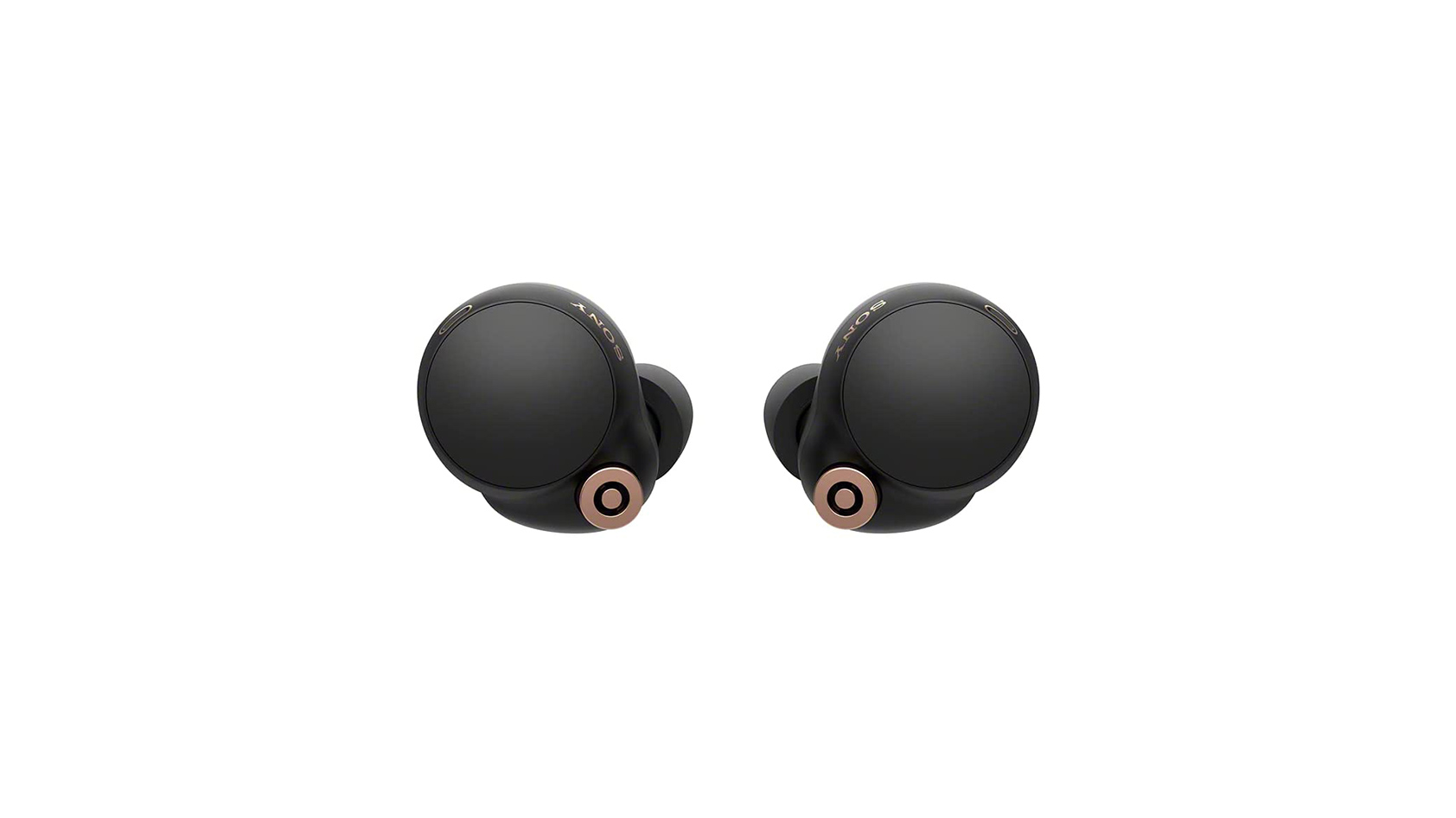
Since the Bose QuietComfort Earbuds are older, it will likely see greater discounts sooner than Sony’s earbuds. If you find a great deal, you shouldn’t feel any buyer’s remorse with the Bose QuietComfort Earbuds. Though the earbuds may no longer quite hold up to the latest from Sony, they are still among the best true wireless earbuds on the market.
We’ll keep the widget below updated with any new deals we can find.
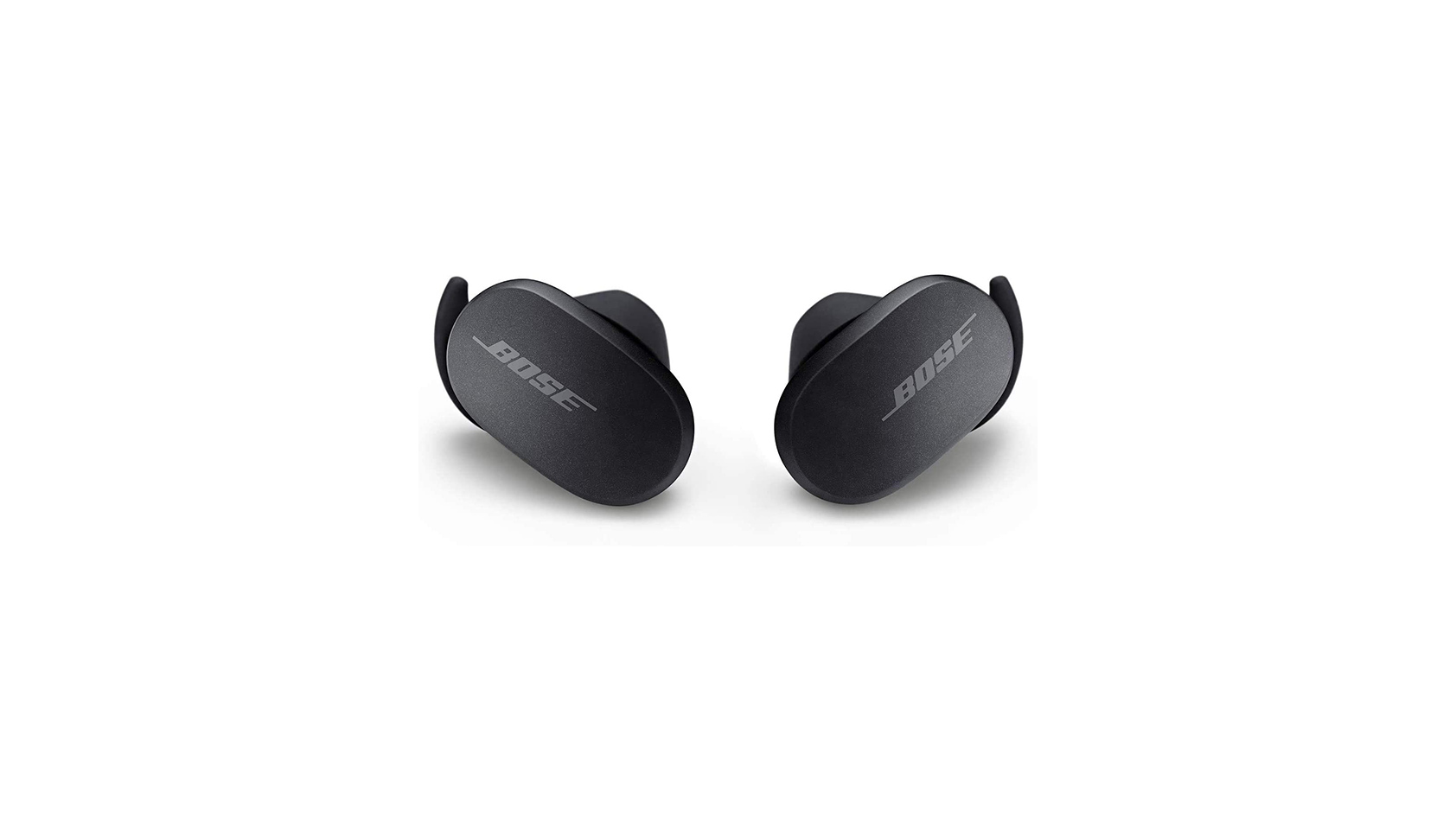
What should you get instead of Bose and Sony’s noise canceling earbuds?
Now that the Bose QuietComfort Earbuds have been replaced by the Bose QuietComfort Earbuds II, it’s worth taking a look at the new earbuds. While there’s a lot to like about the new model, deciding which product is the right one for you can get a little sticky. Still, the newer model improved upon the original in a few ways that may catch your interest.
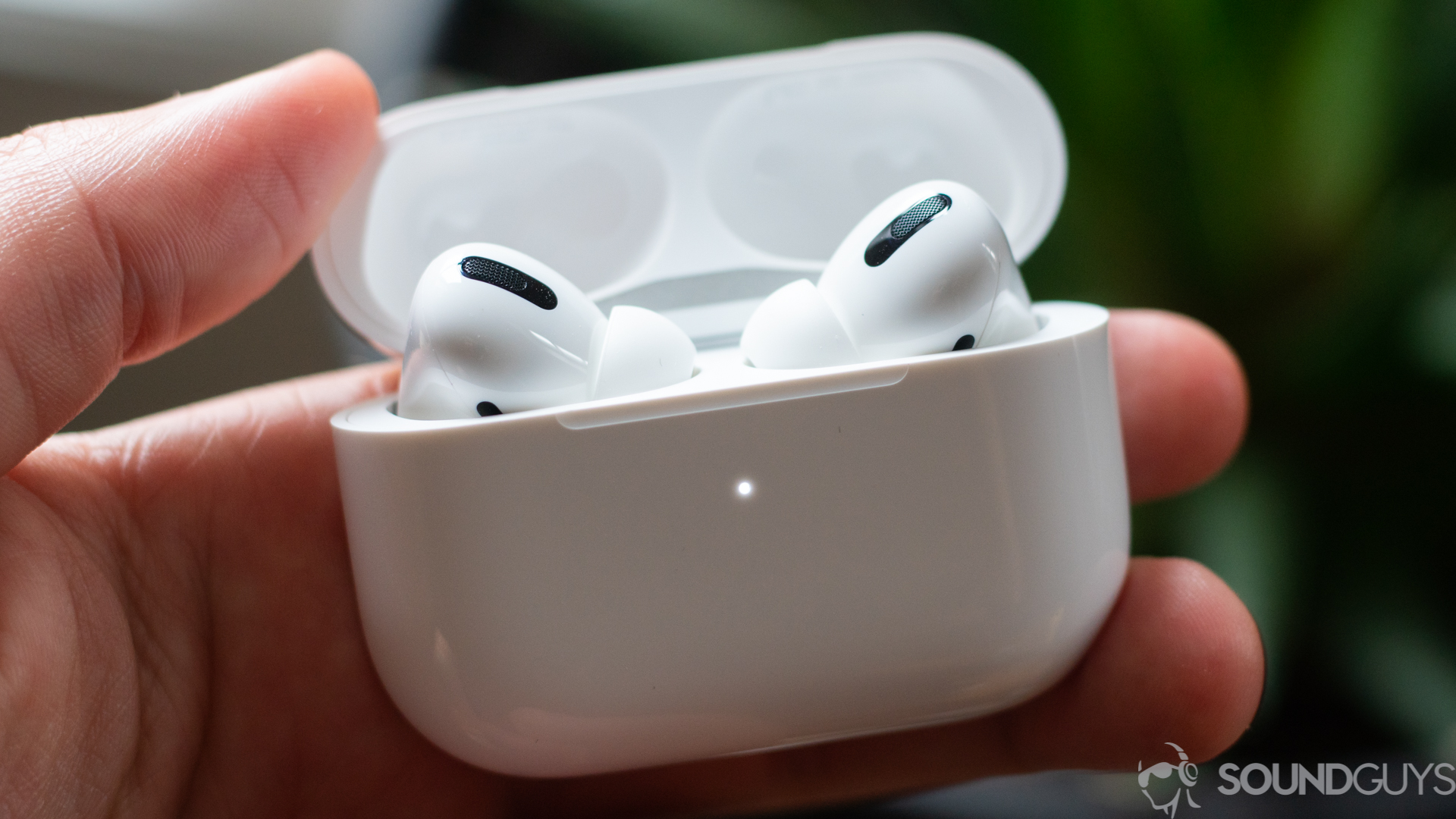
If you’re heavily invested in the Apple ecosystem, the Airpods Pro is definitely worth a look. It connects seamlessly to Apple devices, and has a much better design and fit than the original Airpods. It compares pretty well against the Sony WF-1000XM4, and the drawbacks are well worth it for iPhone owners.
Anyone who owns a Samsung Galaxy smartphone should consider the Samsung Galaxy Buds Pro, which has noise canceling. The Galaxy Buds Pro earbuds have an IPX7 rating, and you can charge the case atop a compatible Galaxy device—which you can also do with the Buds Plus case. If you don’t need the IPX7 rating, the Samsung Galaxy Buds 2 is cheaper than the Pro and has slightly better ANC.
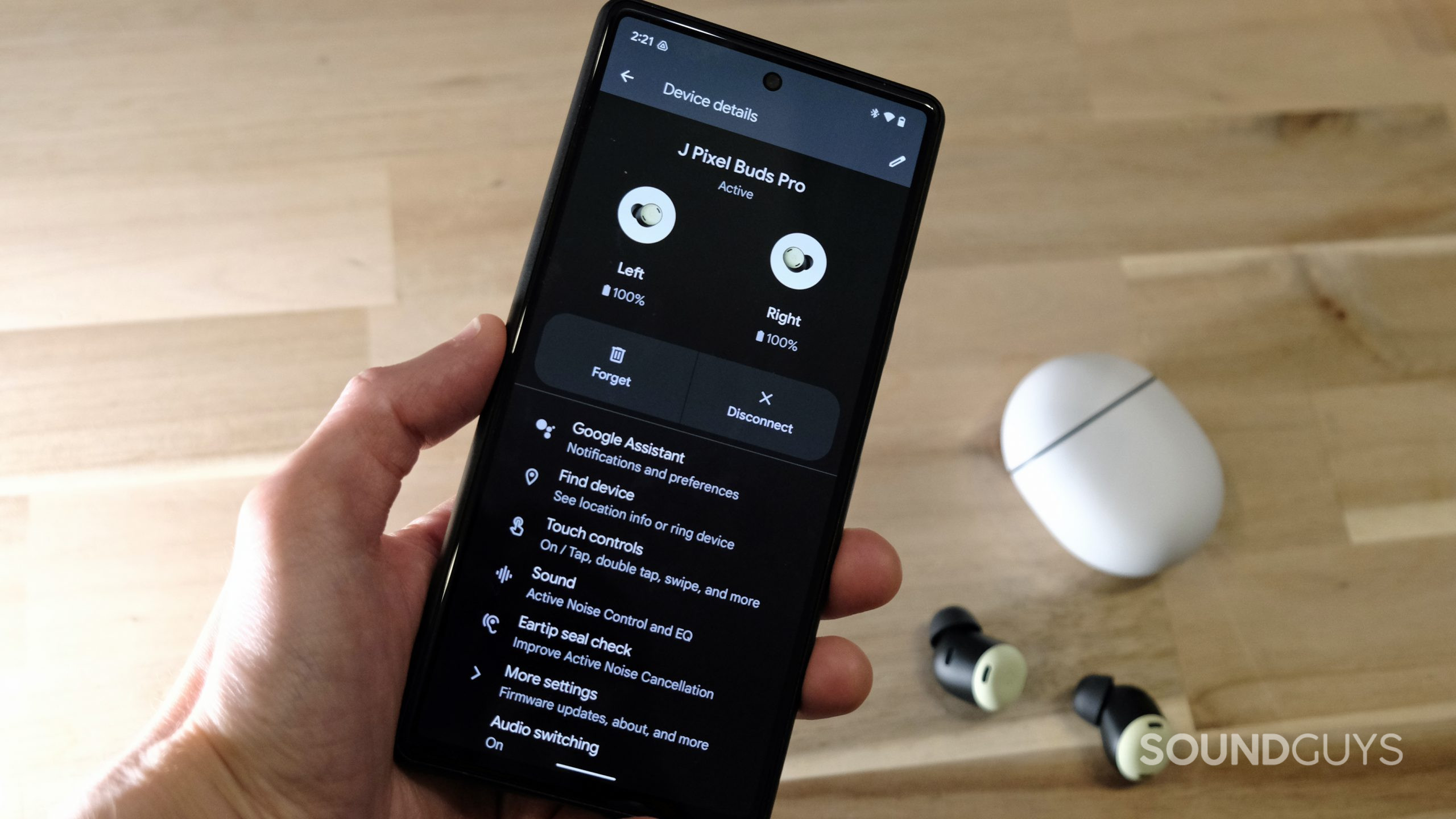
The Google Pixel Buds Pro stands as another great alternative to both Bose and Sony’s earbuds. Google’s debut ANC earphones feature some of the best noise canceling we’ve tested, nearly matching the Bose QuietComfort Earbuds’ low-frequency attenuation. With the Pixel Buds Pro, you can get Google Translate right to your headset (so long as you download the corresponding apps on your phone). It also supports multipoint connectivity and direct voice access to Google Assistant. Oh, and it’s one of the few wireless earbuds to sport a water-resistant case (IPX2).
You can read about how the Pixel Buds Pro compares to the Bose QC Earbuds and Sony WF-1000XM4 in our corresponding versus articles.
Frequently asked questions about the Bose QuietComfort Earbuds and Sony WF-1000XM4
Yes, both the Bose QuietComfort Earbuds and Sony WF-1000XM4 support mono playback through a single earbud. However, mono playback on the Bose QuietComfort Earbuds is limited to the right earbud only.
If you like being able to hear everything going on around you, there are a couple of options out there that might work for you. The Sony LinkBuds and Apple AirPods (3rd generation) don’t have noise canceling or even passive isolation from ear tips, so it’s easy to hear your environment.
Neither the Bose QuietComfort Earbuds or Sony WF-1000XM4 supports Bluetooth multipoint, but both quickly switch devices simply by tapping on the name of the earbuds in your Bluetooth settings. If you’re looking for a list of devices that support Bluetooth multipoint, check out our full article on Bluetooth multipoint.
Thank you for being part of our community. Read our Comment Policy before posting.